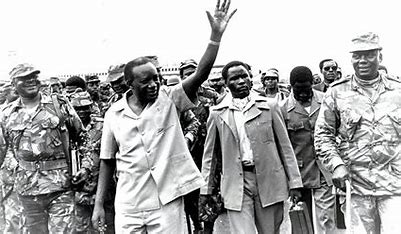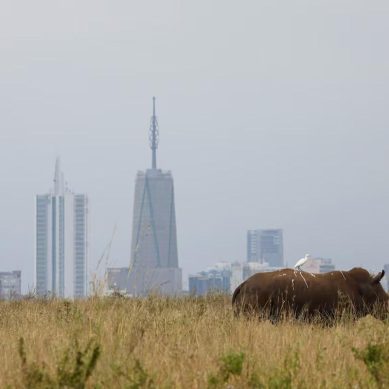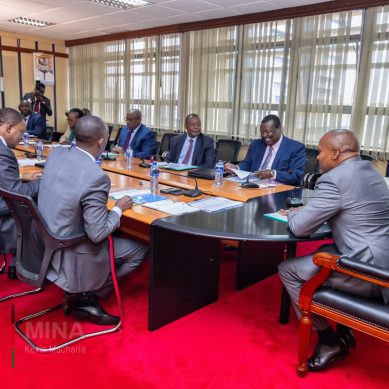
If you asked me why I decided to link military occupation, militarisation and criminalisation of Uganda’s society, I would straight away retort that it is because the three processes have been going on simultaneously in an interrelated, interconnected and interdependent manner, especially since the early 1980s, but became more exponential since 1986.
The interrelationship, interconnection and interdependence between military occupation, militarisation and criminalisation reflect the violent and criminal mindset of those in the leadership and governance of Uganda. This, in my view, explains the rising phenomenon of crime of all types, which together are the reason corruption continues to proliferate and spiral upwards despite the good intentions of government to contain it.
However, some thinkers see corruption as integral to the governance system. The mindset is that nothing – including leadership, governance and wealth – can be obtained and realised without violence in the past, present and future. The implication here is that one cannot lead, govern or be rich without having a violent and criminal mind.
Before I proceed with expounding my thesis statement that, In Uganda the military occupation, militarisation and criminalisation of society are interrelated, interconnected and interdependent, let me try to define the terms military occupation, militarisation and criminalisation in the context of this article.
Wikipedia defines military occupation, also known as belligerent occupation or simply occupation, as the effective military control by a ruling power over that territory… The territory is then known as the occupied territory and the ruling power as the occupant. Occupation is distinguished from annexation and colonialism by its intended temporary duration. While an occupant may set up a formal military government in the occupied territory to facilitate its administration, it is not necessarily a precondition for occupation.
Wikipedia also defines militarisation as the process by which a government organises itself for military conflict and violence. It is related to militarism, the ideology that reflects the level of militarisation of the state. Sometimes, however, militarisation may refer to the making of a civil society or organisation resemble armed forces, with uniforms and weapons.
A dictionary definition of criminalisation is that it is the action of turning an activity into a criminal offence by making it illegal, or that it is the action of turning someone (or a group of people) into criminals by making their activity or activities illegal.
For the purposes of this article, I will define military occupation of Uganda as the use of violence and offensive weapons by a group dominated by refugees from Rwanda and the Mulenge area of the Democratic Republic of Congo to capture the instruments of power and use the power thereof to impose itself on the country in every sphere of life and activity. I will define militarisation of Uganda as the process of refugees or former refugees using and applying military methodologies and strategies to retune the Ugandan society or people into accepting, thinking, believing and being convinced that the military and militarism are essential aspects of civil society.
Indeed, unlike before, military personnel live among civil society and buy goods and services from the same sources.
I will take criminalisation in the context of the dictionary definition because in the Uganda of President Yoweri Tibuhaburwa Museveni, many activities have been made illegal and most prominently alternative political actors have had their political activities made illegal by law.
Thus, effective occupation of a country involves militarism, militarisation and creation or adoption of various methodologies of criminalising individuals, organisations or society as a whole. Let me begin by elaborating how exactly Uganda was occupied, by who, why and who helped the occupiers to occupy what was a sovereign country with a sovereign people.
When the British colonialists handed power to back people on October 9, 1962, they left the new country with the scourge of refugees, mainly from Rwanda. The new postcolonial government in Uganda had to play a balancing act of helping the new government in Rwanda led by President Kayibanda (who was a Hutu) to establish and sustain a stable government and providing a safe haven for and containing the Tutsi refugee malaise in Uganda with its origins in the sociopolitical chaos and collapse in Rwanda in the early 1920s (particularly 1926) and the late 1950s (particularly 1959).
The sociopolitical conflicts were between the nomadic-pastoral Tutsi nation and the settler Hutu nation. They were largely caused by the poor governance of the Belgian colonialists who preferred and encouraged the migrant Tutsis to manifest as a privileged group of royal and imperial people over the Hutus. The Tutsis repressed and dehumanised Hutus as their slaves.
Both in 1926 and 1959 the Hutus revolted against the harsh, repressive Tutsi rule, forcing the Tutsis to flee to Uganda. In 1926, the British colonial rulers welcomed them in their evolving British Protectorate of Uganda, finding them useful in the emerging sugar industry. Even in 1959, the colonial rulers welcomed more Tutsi refugees following renewed social and political conflicts between Hutus and Tutsis. Many mixed freely with the population but a good number were put in refugee camps in Western Uganda.
However, there were also economic refugees who transcended to Uganda to work on the coffee farms, mainly in Buganda, and sugarcane plantations, mainly of Kakira Sugar Works. Kakira Sugar Works would ferry the Tutsi labourers to and from Kakira back to Rwanda and bring others to replace them on tracks. Other Tutsi labourers migrated on their own to seek all sorts of shoddy jobs, including looking after cattle of the well-off-to-do Ugandans in all regions of the country.
Others frequently migrated with their cattle across the boundary between Uganda and Rwanda looking for grass and water. Those migrating with their cattle from Rwanda to Uganda and back to Rwanda could not be referred to as refugees because they did not come to stay. Their residence in Uganda was always transient.
By the time the British colonialists handed the instruments of power to Apollo Milton Obote on October 9, 1962, there were refugee camps established by them. The Obote government established more to accommodate the large numbers of Tutsi refugees flowing in from Rwanda. However, these refugees did not like to be restricted to the refugee camps. They wanted freedom to organise militarily and go back to their country as the rulers. They were ever belligerent and organising themselves, perhaps in concert with their own kind outside the camps, to invade Rwanda and overthrow the Hutu government o Kayibanda. However, the sovereign Obote-led government would always intervene to constrain them back to the camps. This was one reason they hated Obote: not allowing them to fight their way back to the seat of power in Kigali.
Another reason was when in the 1980s, a minister for agriculture in the Obote regime, Dr Patrick Rubaihayo, forced the refugees to get out of the swamps of Ankole they had occupied illegally back to country when Obote was out of Uganda. It was the intervention of Obote that halted what could be called Force the Tutsi Refugees Back to Rwanda Operation. Nevertheless, it was the Obote regime that was in power, and the refugees did not see Rubaihayo but Obote as their enemy. For them Obote deserved no forgiveness.
The people of the Tutsi nation, who came from Ethiopia upstream the Nile nearly 500 years ago, settled in Bunyoro for a long time as Bahuma, so-called by the Banyoro because when they sang, they hummed like bees. They are very closely related ethnically the Hima who settled in Ankole as the Tutsi continued migrating southward into Rwanda and Burundi. Some scholars have written that they are people in Namibia who are related to the Tutsi, meaning that they continued migrating further down. One characteristic of the Tutsi is their extreme ethnocentrism.
Although the Tutsi of Rwanda and Burundi were Hutunized linguistically, the Hima of Uganda were Bairunized linguistically. However, both Tutsi and Hima, related ethnically as they are, retained their Coptic language, which is unique to them only in the Great Lakes region and a good uniting factor. They are a very determined people who regarded the Bantu they interacted with as inferior good-for-nothing beings worth only for serving as slaves.
Tutsi are a people who believe that everything, including cattle, money, jobs, opportunities, land and future should only belong to them, while other people can best serve as slaves. This plus their being a small group dictate their collective behaviour towards other people. As such they are prone to building a cultic hegemony. This is what has happened both in Uganda and Rwanda in recent times, as was the case in the past.
This is not surprising. The rulers of Rwanda first helped their kind to capture the instruments of power in Uganda, before their kind could also help them to capture power in Kigali through the barrel of the gun. In both countries the rulers use military power, money, jobs and elections whose processes they own and control to ensure that there is no challenge to and destabilisation of their perpetual hold onto power. They effectively occupy Rwanda and Uganda, not only militarily but also politically, economically, socially, ecologically and environmentally, and are struggling to ensure they control all cultures.
In Uganda, the rulers – both in the military and politics (where is the difference?) – have been heard several times during the past 37 years both declaring and pronouncing that they cannot, and will never hand over power to those who never fought in the bushes of Luwero in Buganda.
- A Tell report / By Prof Oweyegha-Afunaduula, a former professor in the Department of Environmental Sciences of the Makerere University, Uganda











